Byron Joyner, MD, MPA
One of the joys of this DIO blog is that we can celebrate the accomplishments and amazing work of our residents and fellows. This month, I’ve invited Drs. Mariam Alam, R4 Dermatology, and Caitlin Crimp, Acting Instructor, Department of Dermatology (and 2023 graduate of the Dermatology residency program) to reflect on their ACGME Back to Bedside project, “Mitigating Bias and Burnout Through Patient-Centered Narrative Medicine.” In June 2022, Drs. Alam and Crimp received a Back to Bedside grant to develop a narrative medicine curriculum for dermatology residents, with the goal of improving residents’ understanding and connection to patients and mitigating both bias and burnout.
Byron Joyner, MD, MPA
Vice Dean for Graduate Medical Education, Designated Institutional Official

Drs. Mariam Alam and Caitlin Crimp, in front of their Back to Bedside poster with Steph Timm (Manager, Education and Training Programs, Department of Dermatology) at the Annual ACGME Conference
Every person has a story. But often, as doctors, we miss that story. Our days get filled with frenetic clinic schedules, heaps of notes, endless computer clicks, prior authorizations, prescription refills…our patients themselves get lost. Busy, tired, overworked, we stop seeing our patients. A vicious cycle starts. Losing human connection contributes to burn out. Not understanding our patients reinforces biases. The gap between the doctor and the patient widens.
What if we had time and space to just hear our patient’s story? And, could stories in art and literature help us to understand and connect with our patients? With each other? With ourselves?
We received funding and mentorship through the Accreditation Council for Graduate Medical Education (ACGME) Back to Bedside program to develop, implement and evaluate the impact of a narrative medicine curriculum for the dermatology residency program at the University of Washington.
Our curriculum centers around four narrative sessions per academic year, each of which focuses on an identity or disease group relevant to dermatology. Some of the topics we have focused on include hidradenitis suppurativa, skin of color, hair loss, psoriasis and gender identity. During each session, a patient is invited to come and talk with residents and share their story and answer questions informally.
Following this conversation, residents are asked to read a piece of literature or poetry, look at a piece of art or listen to spoken word relevant to the session topic, and then complete a journal entry in response to a written prompt. For example, following our psoriasis session, residents read an excerpt from “From the Journal of a Leper” by John Updike and responded to the prompt “Write about a patient’s suffering who moved you.” This writing exercise is followed by discussion among the residents, reflecting on their conversation with the patient and the associated narrative medicine exercise.
We hypothesized that bias and burnout would decrease through implementation of this curriculum, and asked resident participants to complete a survey, the Maslach Burnout Inventory and Harvard Implicit Association (IAT) tests at baseline, midpoint and following completion of the curriculum, and we have data for our first half of the two-year curriculum. Although Harvard IAT scores remained stable, self-reported bias and experienced bias increased, perhaps suggesting increased awareness of bias and self-reflection. Self-reported burnout increased over the course of the academic year, however more residents reported using writing and self-reflection as tools for coping with burnout and combatting bias.
Residents also provided overwhelmingly positive feedback for the curriculum. As one resident wrote, “This was an incredible experience. I felt I was able to ask questions during the panel that I wouldn’t necessarily ask in the constraints of a patient visit. It has prompted me to ask more questions to patients regarding the impact of their condition on their daily lives.”
As we develop year three of the curriculum, we aim to create a sustainable, long-standing narrative medicine curriculum for dermatology residents. Our long-term goals include expansion of the curriculum to UW dermatology faculty, outside dermatology programs and adaptation of our model for non-dermatology specialties.
Listening to each other, sharing our stories connects us. And, over time, it may chip away at burn out and bias. It’s a simple plan: time, space, someone to tell a story, and someone to listen.
Mariam Alam, MD and Caitlin Crimp, MD
 Mariam Alam, MD |
 Caitlin Crimp, MD |
See other articles on Dr. Alam’s and Crimp’s projects:
Drs. Alam & Crimp Receive Funding for ACGME Patient Engagement Project
Narrative Medicine Patient Panels Combat Bias & Burnout Through Storytelling
Back to Bedside Project Summaries
